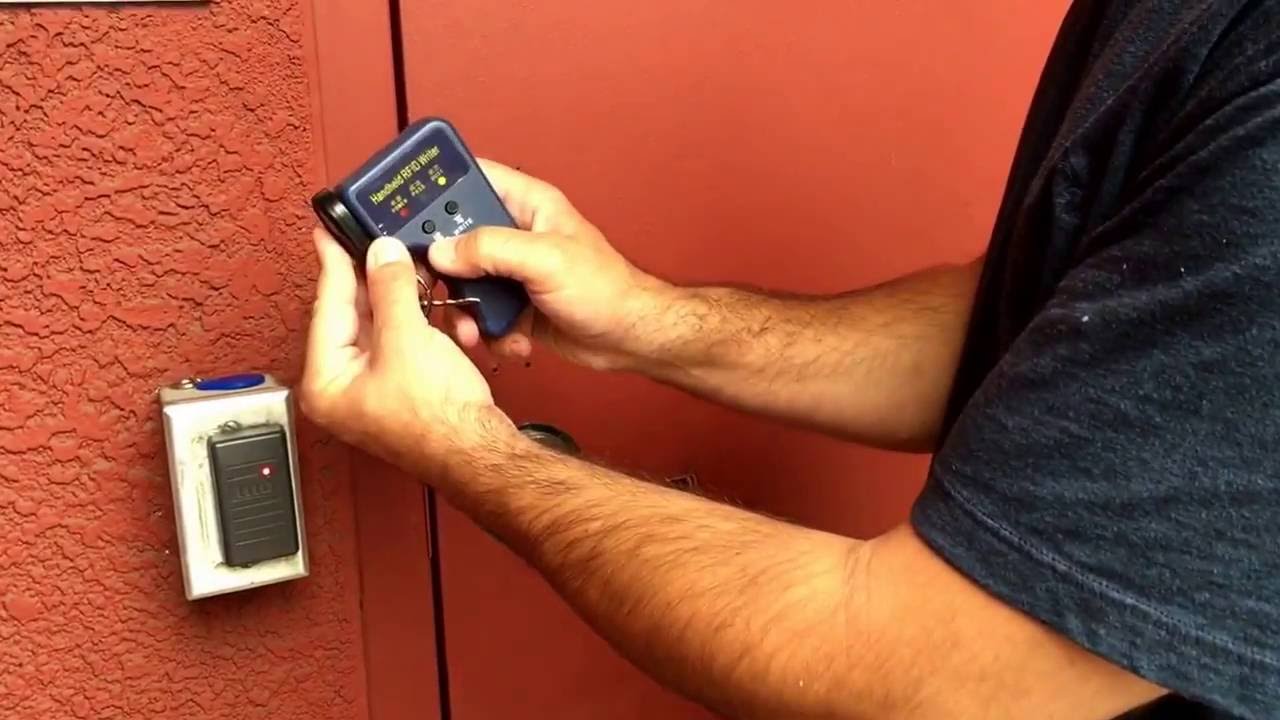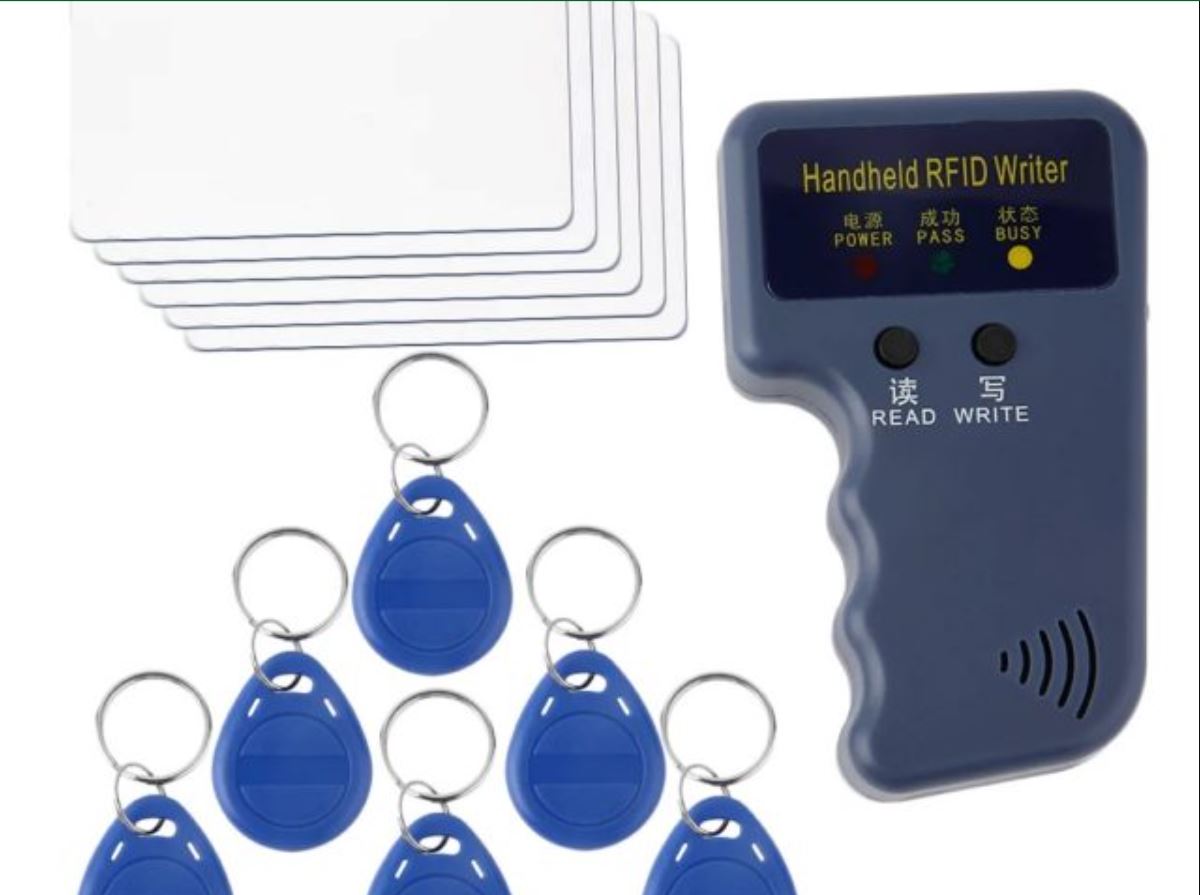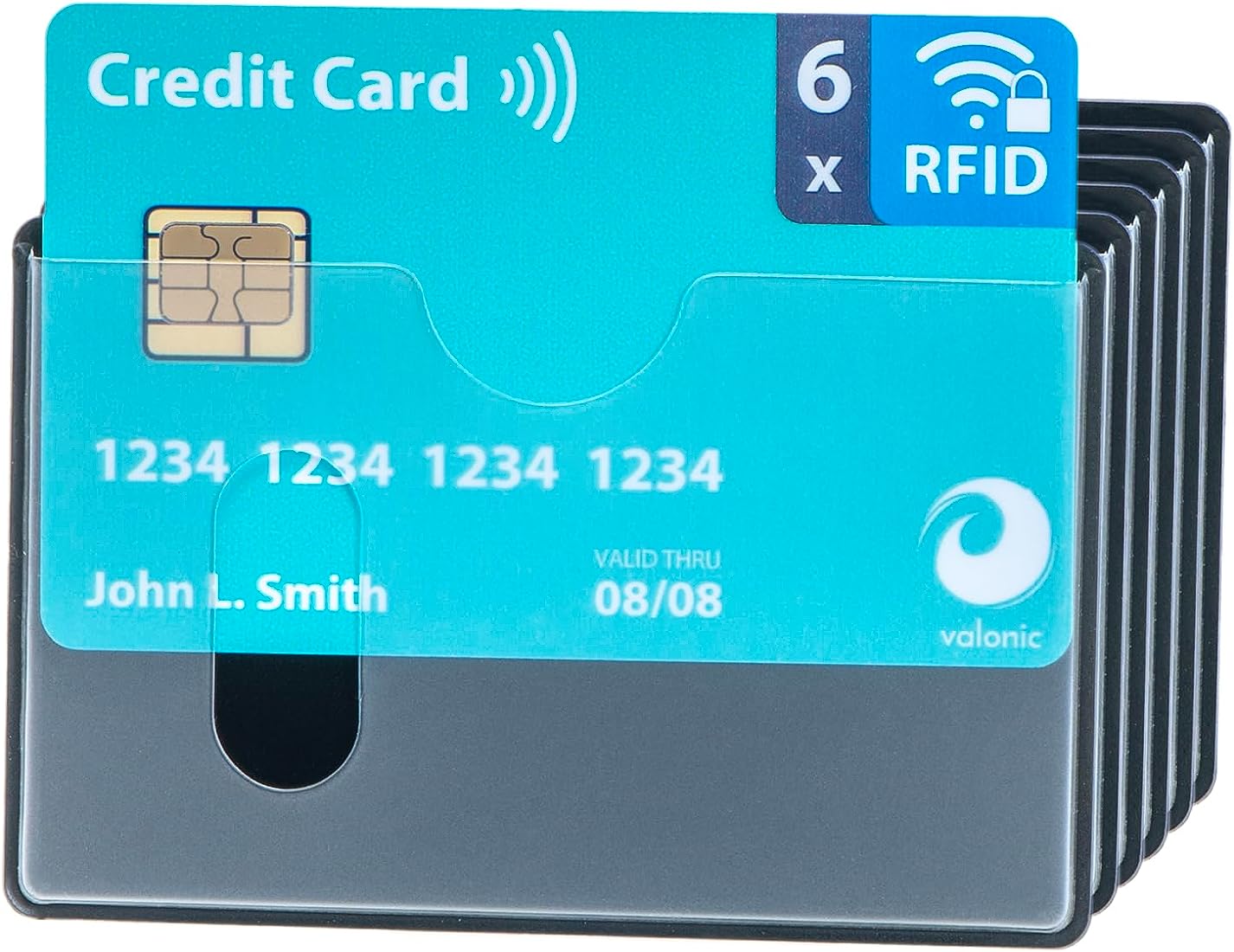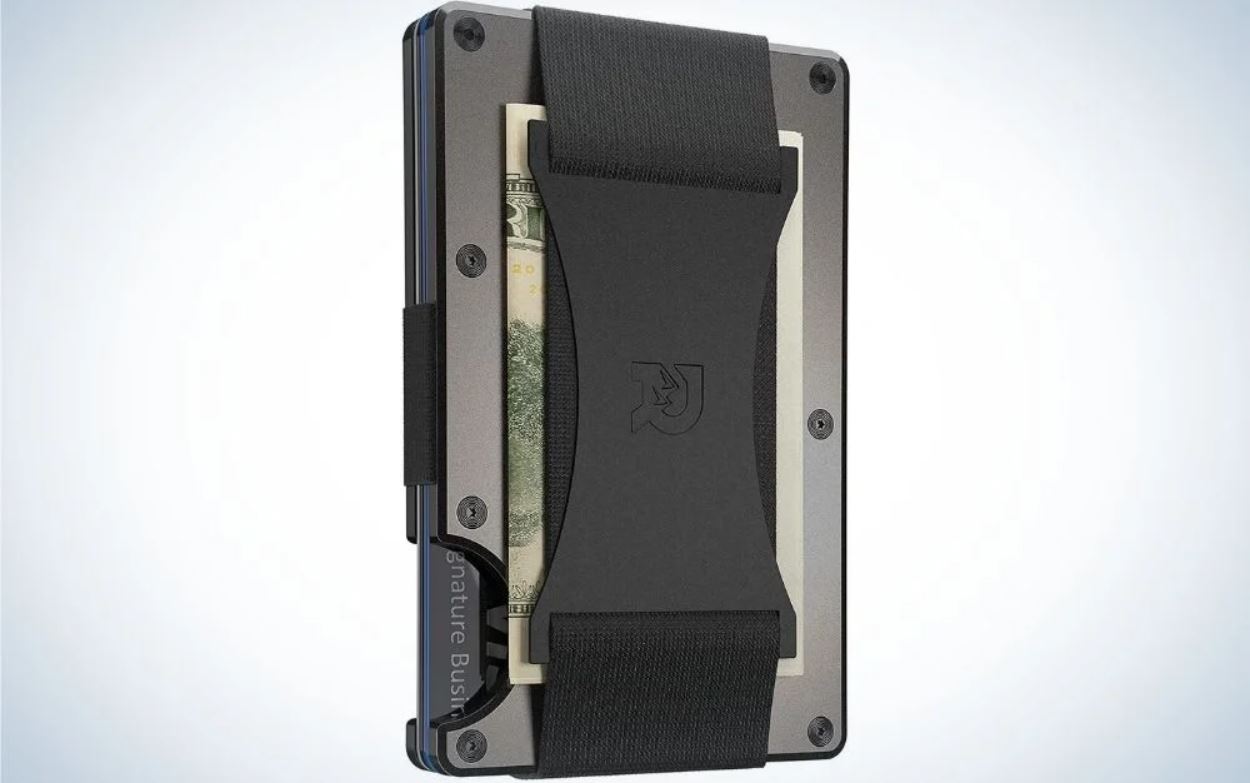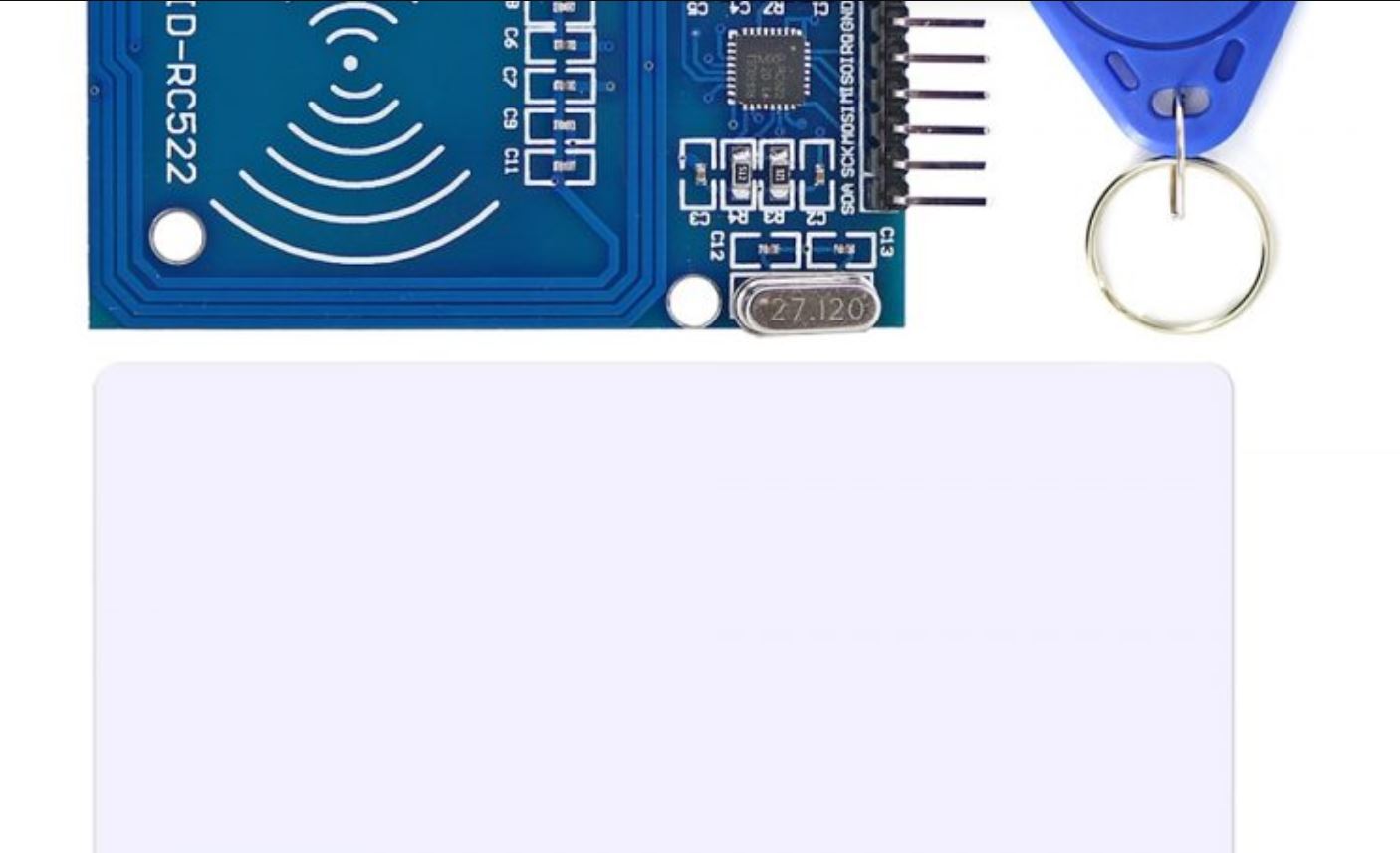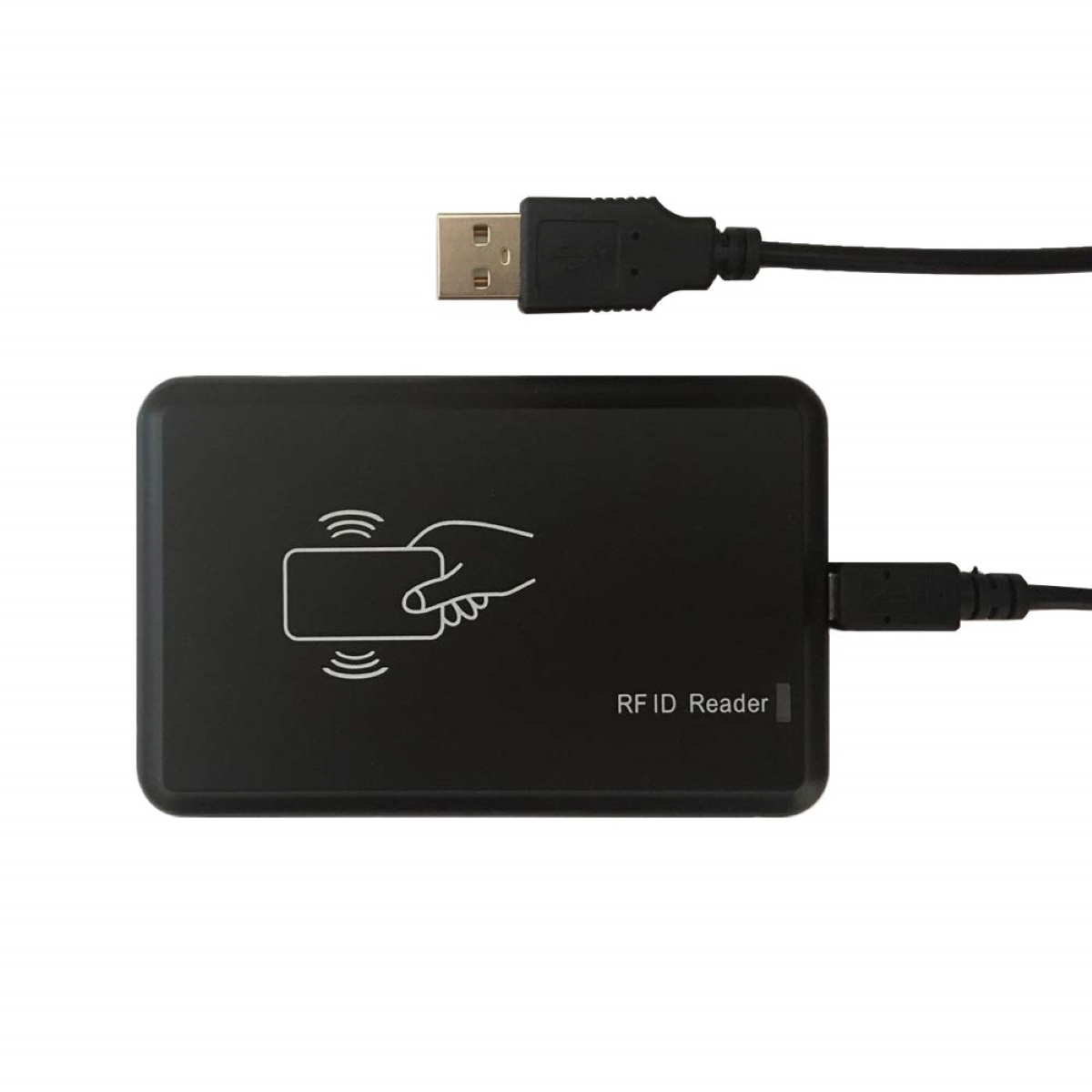Introduction
RFID (Radio Frequency Identification) technology has become increasingly prevalent in our modern lives. RFID cards are commonly used for various purposes such as access control systems, public transportation cards, and identification badges. While these cards provide convenience and security, there are situations where you may need to copy an RFID card for backup or for other authorized users.
In this article, we will guide you through the process of copying an RFID card. This step-by-step guide will help you understand the technology behind RFID cards, the tools required for cloning, and the necessary steps to successfully create a duplicate card. Please note that the purpose of this article is to provide information and should not be used for any illegal activities or unauthorized access.
Understanding how RFID technology works is essential before attempting to copy an RFID card. RFID uses electromagnetic fields to automatically identify and track tags attached to objects. Each RFID card contains a unique identifier embedded in its microchip. This identifier is transmitted to a reader device when the card is within range of the reader’s field. The reader then verifies the card’s validity and grants or denies access accordingly.
While cloning an RFID card may seem like a complex undertaking, it can be done with the right knowledge and tools. By following the steps outlined in this article, you will be able to create a functional clone of your RFID card.
Understanding RFID Technology
Radio Frequency Identification (RFID) technology is a wireless communication technology that allows data to be transmitted from an RFID tag to a reader device using radio frequency signals. RFID tags, also known as transponders, consist of a microchip and an antenna. These tags are embedded within RFID cards and other objects to enable identification and tracking.
RFID works on the principle of electromagnetic fields. When an RFID card comes into proximity of an RFID reader, the reader emits a radio frequency signal that powers the RFID tag. The tag then sends back a unique identifier or other data stored on its microchip. This identifier is used to identify and authenticate the RFID card.
There are two main types of RFID systems: active and passive. Active RFID systems have their own power source, allowing them to transmit data over longer distances. These types of systems are commonly used in applications such as tracking goods in a supply chain or locating assets in a large facility.
Passive RFID systems, on the other hand, do not have a built-in power source. Instead, they draw power from the RFID reader’s radio frequency signal. When a reader is in proximity, it energizes the passive RFID tag and collects the data transmitted by the tag. Passive RFID systems are widely used for access control, inventory management, and contactless payment systems.
RFID cards, which are the focus of this article, typically fall into the passive RFID category. They are commonly used for access control to buildings, parking lots, or public transportation. These cards offer convenience and security, as they can be easily scanned by a reader without the need for physical contact.
It’s important to note that different RFID cards may operate on different frequencies, such as low-frequency (LF), high-frequency (HF), or ultra-high-frequency (UHF). Each frequency has its specific range, read speed, and compatibility with different applications. When cloning an RFID card, it’s crucial to identify the frequency and other specifications of the original card to ensure compatibility with the clone.
In the next section, we will delve into the steps involved in copying an RFID card, including obtaining the necessary tools and gathering the required information.
Step 1: Obtain the Appropriate Tools
Before you can begin the process of copying an RFID card, you’ll need to gather the necessary tools and equipment. While the specific tools required may vary depending on the type of RFID card you have, here are some essential tools you’ll generally need:
- RFID Reader/Writer: This device is used to communicate with the RFID card and extract the necessary information from it. There are various types of RFID readers available, so be sure to choose one that is compatible with your card’s frequency and protocol.
- Blank RFID Cards: These cards will serve as the blank slates on which you’ll clone the information from the original RFID card. Make sure to purchase blank cards that are compatible with your reader and can be written to.
- Computer/Smartphone: You’ll need a computer or smartphone to run the software required for cloning the RFID card. Ensure that your device meets the software’s system requirements.
- Software/Application: Look for a reliable RFID cloning software or application that is compatible with your RFID reader and card. This software will allow you to read, write, and clone the RFID card’s data onto the blank cards.
- USB Cable: A USB cable will be needed to connect the RFID reader to your computer or smartphone for data transfer.
- Optional: If the RFID card you’re cloning uses encryption or advanced security measures, you may need additional tools or hardware to bypass or override these security features. This may include specialized hardware or knowledge of cryptoanalysis techniques.
It’s crucial to ensure that the tools you obtain are legitimate and legal to use. Be cautious of counterfeit products or software that may compromise the security of the cloning process or violate any laws or regulations.
Once you have gathered the necessary tools, you’re ready to proceed to the next step, which involves identifying the type of RFID card you have.
Step 2: Identify the Type of RFID Card
Before you can successfully clone an RFID card, it’s important to identify the type of RFID card you have. This information will help determine the compatibility of your card with the cloning software and ensure a successful cloning process.
Here are a few steps to help you identify the type of RFID card:
- Check for Card Labeling: Look for any labels or markings on the RFID card itself. Some cards may have printed information indicating the frequency or technology used.
- Research the Card: Conduct online research to gather information about the specific brand and model of your RFID card. Manufacturers often provide details and specifications on their official websites.
- Contact the Card Provider: If you obtained the RFID card from a specific provider or organization, reach out to them for assistance. They may be able to provide you with information about the card’s specifications and compatible cloning methods.
- Use an RFID Scanner: If you have access to an RFID scanner, you can use it to scan the card and gather information such as frequency, protocol, and card type. This information can then be used to search for compatible cloning software.
It’s important to note that different types of RFID cards may require different cloning methods or have varying levels of security measures. Some cards may use encryption or other security protocols to prevent unauthorized cloning. Identifying the type of card you have will allow you to find the appropriate cloning software and ensure compatibility with your card.
Once you have identified the type of RFID card you have, you can move on to the next step, which involves gathering the necessary information required for the cloning process.
Step 3: Gather the Necessary Information
Now that you have identified the type of RFID card you have, it’s time to gather the necessary information that will be required for the cloning process. This information will vary depending on the specific card and the cloning software you are using, but here are some common details you may need to gather:
- Card Frequency: Determine the frequency at which your RFID card operates. This information is crucial as it will ensure that you select the appropriate cloning software and blank cards that are compatible with the card’s frequency.
- Card Protocol/Standard: Identify the protocol or standard that your RFID card uses. Different protocols, such as ISO 14443 for high-frequency (HF) cards or ISO 15693 for vicinity cards, require specific cloning methods and software compatibility.
- Unique Identifier: Note down the unique identifier or serial number of your RFID card. This information will be used to write the same identifier onto the blank cards during the cloning process.
- Data Blocks: Some RFID cards have specific data blocks or sectors that store important information such as access permissions or card balance. Take note of the data blocks that you want to clone, as this will ensure that the necessary information is replicated onto the blank cards.
- Encryption or Authentication Methods: Determine if your RFID card uses any encryption or authentication methods. If encryption is present, the cloning process may be more complex and require additional tools or techniques to bypass the security measures.
It’s important to gather as much information as possible about your RFID card to ensure a successful cloning process. This information will help you select the right cloning software and configure the settings appropriately for accurate duplication.
Once you have gathered the necessary information, you are ready to proceed to the next step, which involves actually cloning the RFID card. We’ll cover this process in detail in the upcoming section.
Step 4: Clone the RFID Card
Now that you have the appropriate tools, have identified the type of RFID card you have, and gathered all the necessary information, it’s time to proceed with cloning the RFID card. Follow these steps to successfully clone your RFID card:
- Install Cloning Software: Begin by installing the chosen RFID cloning software onto your computer or smartphone. Ensure that the software is compatible with your RFID reader and supports the cloning method needed for your specific card.
- Connect the RFID Reader: Connect your RFID reader to your computer or smartphone using the USB cable provided. Make sure that the connection is secure and that the reader is recognized by the cloning software.
- Power On the RFID Card: Power on the original RFID card and bring it close to the RFID reader. Ensure that the card is placed within the reader’s range for successful communication.
- Read the Card Data: Use the cloning software to read the data from the original RFID card. The software will extract the unique identifier, data blocks, and any other relevant information needed for cloning.
- Prepare the Blank RFID Card: Take a blank RFID card that is compatible with your cloning software and RFID reader. Ensure that the card is positioned correctly in the cloning device or prepared for wireless cloning if applicable.
- Write the Cloned Data: Use the cloning software to write the extracted data from the original RFID card onto the blank card. This process involves writing the unique identifier, data blocks, and any encryption or authentication methods if applicable.
- Verify the Cloned RFID Card: Once the data is successfully written onto the blank card, use the cloning software to verify that the cloned card is functioning as intended. Check if the unique identifier matches and if the required data blocks are readable and accurate.
- Test the Cloned RFID Card: Test the cloned RFID card by using it in the same applications and systems for which you originally used the original card. Check if it grants access, displays the correct information, or performs the desired functionalities.
It’s important to note that the cloning process may vary depending on the specific software and card requirements. Carefully follow the instructions provided by the cloning software and refer to any documentation or FAQs available.
With the cloning process complete, you now have a functional clone of your RFID card. However, it’s essential to use the cloned card responsibly and within legal boundaries. Misuse or unauthorized duplication of RFID cards may lead to legal repercussions.
In the next step, we will cover the final phase of the cloning process: testing the cloned RFID card.
Step 5: Test the Cloned RFID Card
After successfully cloning an RFID card, it is crucial to test the cloned card to ensure its functionality and compatibility. Follow these steps to properly test the cloned RFID card:
- Choose Testing Scenarios: Determine the specific applications or systems in which you intend to use the cloned RFID card. This could include access control systems, public transportation gateways, or any other systems that the original card was used for.
- Access Testing Environment: Go to the respective testing environment, whether it is an access-controlled building, a transportation station, or any other relevant location.
- Present the Cloned RFID Card: Present the cloned RFID card to the appropriate reader or device that the original card was used with. Ensure the cloned card is within the reader’s range for successful communication.
- Observe the Response: Pay close attention to the response of the system when you present the cloned card. If the card is functioning properly, it should grant you access, display the necessary information, or perform the expected action.
- Verify Data Accuracy: Check that the data on the cloned card is accurate and matches the original card. Verify that the unique identifier, data blocks, and any encryption or authentication methods are correctly transferred onto the cloned card.
- Test Multiple Scenarios: Repeat the testing process by utilizing the cloned RFID card in different scenarios or systems to ensure its compatibility and reliability. Test in various readers, with different access levels, or in different locations to cover all possible usage scenarios.
During the testing phase, it is important to pay attention to any discrepancies or errors that may arise. If the cloned RFID card is not functioning as expected, it may be necessary to repeat the cloning process or consider additional troubleshooting steps.
Remember, it is essential to use the cloned RFID card responsibly and within legal boundaries. Ensure that you have the necessary authorization and permissions before using the card in any systems or applications.
With the cloned RFID card successfully tested and verified, you can now confidently use it as a backup or for authorized purposes.
As we conclude this guide, we hope that you have gained valuable insights into the process of cloning an RFID card. It is essential to emphasize that the information provided here is for educational purposes only, and any unauthorized or illegal activities are strictly discouraged.
Conclusion
Cloning an RFID card requires careful understanding and execution of the cloning process. By following the steps outlined in this guide, you have learned how to copy an RFID card effectively and responsibly. Understanding the technology behind RFID, obtaining the appropriate tools, identifying the type of card, gathering necessary information, cloning the card, and testing its functionality are all crucial steps in the process.
It is important to note that cloning RFID cards should be done strictly within legal boundaries and for authorized purposes. Any unauthorized use or misuse of cloned cards is illegal and can lead to severe consequences.
Always ensure that you have the necessary permission and authorization to clone an RFID card. Be aware of any legal restrictions or regulations in your jurisdiction regarding the cloning and use of RFID cards.
We hope this guide has provided you with valuable insights and knowledge on how to successfully copy an RFID card. Remember to use this information responsibly and ethically.
If you have any further questions or need additional guidance, consult with professionals in the field or authorized providers who can assist you with the specific requirements and considerations for cloning RFID cards.
With proper knowledge and responsible use, cloning an RFID card can be a valuable tool for backup or authorized access in various applications. Stay informed, stay compliant, and make sure to protect your personal information and security at all times.







